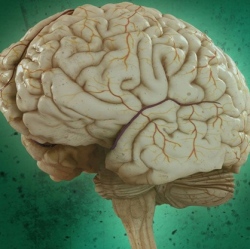
Tesla’s Elon Musk and Facebook’s Regina Dugan made ambitious promises this month about how fast their new research projects into human telepathy could yield big scientific breakthroughs. Three experts in neuroscience to give us a reality check on the stated goals.
While all three welcomed the entry of well-known Silicon Valley figures with deep pockets to the challenge, all three were highly skeptical of the timelines that Dugan and Musk laid down for unlocking the mysteries of how the human brain communicates with the rest of the body.
"It’s exciting that these people think it’s a problem worth solving, but I’m highly skeptical that we’ll be putting these in healthy people within 10 years," says Andrew Pruszynksi, the Canada Research Chair in sensorimotor neuroscience and assistant professor at Western University in Ontario, Canada.
Pruszynski was referring to Neuralink’s objective of implanting tiny electronic devices into the brains of healthy humans within a decade. The goal, according to Musk, is to merge the human brain with machine intelligence so humans can keep up with the ever-more-powerful computers of the future.
Musk, better known as the CEO of electric car-maker Tesla and space travel company SpaceX, says he wants to prevent artificial intelligence from becoming the "other" entity that may someday decide to destroy us pesky humans.
The idea of augmenting humans with machine intelligence for their own protection may be a new one, but research into how the brain records sensory input and uses it to drive physical responses is "an outlandishly difficult problem" that people have been working on since the 1960s, Pruszynski says.
There are two big challenges with the research: first, accurately recording the brain’s neural activity to know which parts are being used to record outside stimuli; second, figuring out how the brain sends the resulting signals out to the peripheral nervous system, which allows a person to move an arm, leg or other body part.
"Trying to get accurate info out of the brain is very difficult," says Pruszynski.
Bradley Wyble, an associate professor of psychology at Penn State University who’s studied how the brain turns visual stimuli into ideas, agrees.
Wyble took issue with Regina Dugan’s prediction, laid out in a Facebook post, that the company will be building a system to demonstrate that humans can type at a rate of 100 words per minute using only their thoughts "over the next two years."
"That’s extremely aggressive," for a such a brain-to-text system, says Wyble.
